The Covid-19 pandemic has changed the way people across the globe live, work, play, and learn. Many of these impacts may fade as we experience fewer viral outbreaks, but in some cases the pandemic merely accelerated trends that were already underway on college and university campuses.
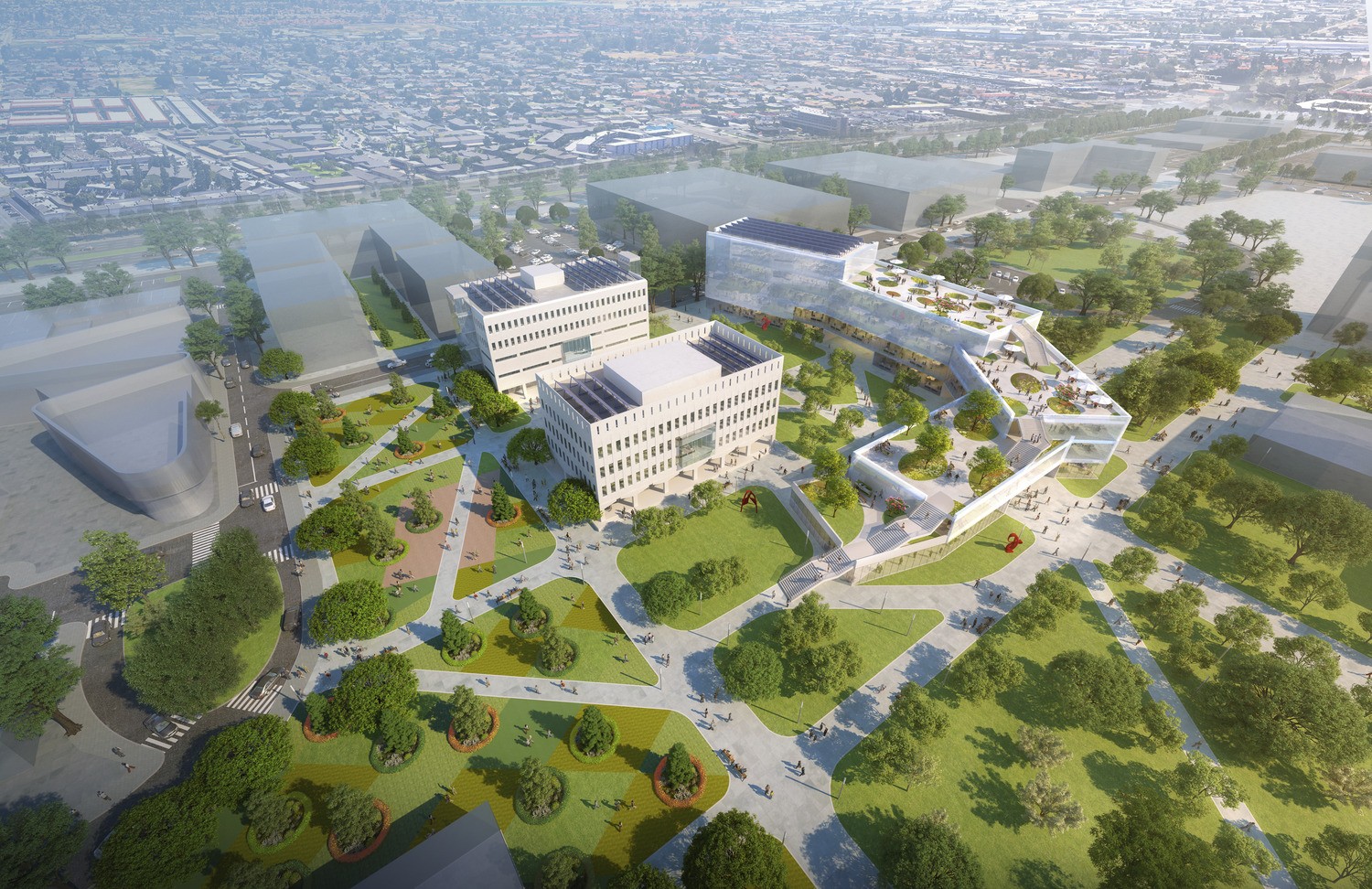
HGA recently hosted roundtable sessions with leaders from 16 different higher education institutions across the United States representing community colleges, public universities, and private four-year colleges to discuss their perspectives on campus planning and the trajectory of priorities for higher education in the post-pandemic world.

Enrollment Impact
One key insight emerged from these conversations: the pandemic has not had a uniform effect on all institutions. Of the 16 participants we met with, eight saw an increase in enrollment and eight experienced a decline during the 2020-2021 academic year. Here are a few other insights:
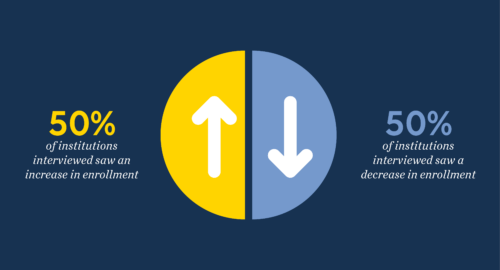
- R1 universities (Doctoral Universities with high research activity) had little enrollment disruption in 2020 and have record enrollment for Fall 2021. Many research institutions saw their numbers remain steady or increase with growth in their graduate programs or online offerings. An Inside Higher Ed article suggests the rising graduate enrollment could be due to continuing online courses which were being offered before the pandemic, or due to students’ desire to improve their skills and chances of employment through attending schools with a reputation for quality and research.
- Community colleges and most public four-year universities experienced a decline in their overall enrollment (including deferrals) during the pandemic. For example, an EdSource article reported that California community colleges saw more than 260,000 fewer students enrolled in Fall 2020 compared to Fall 2019. This could be attributed to changing family and financial circumstances resulting from the pandemic, or simply the fact that some students struggled with the transition from in-person to online modes of teaching.
- While some institutions were eager to get back to how their campuses operated prior to the pandemic, other institutions are taking this opportunity to drive innovation towards redefining their pedagogy and business models. Institutions also report they are evaluating which Covid-forced changes worked well and will be carried on.
Rethinking Workplace Strategy
In our roundtables, 14 of the 16 institutions shared that they are addressing changes in workplace strategy. Like corporate employees, higher education faculty and staff who have benefitted from working-from-home are driving conversations about how much time they will be required to maintain a physical presence on campus. This call for flexibility is balanced with appreciation for the value of workplace culture and collaboration inspired by proximity and casual interactions that many have longed for during this year of video conferencing. Evolving workplace policies may impact building occupancy rates and offer opportunities for institutions to reallocate space—to “grow in place”—through renovation instead of undertaking ambitious new construction plans.
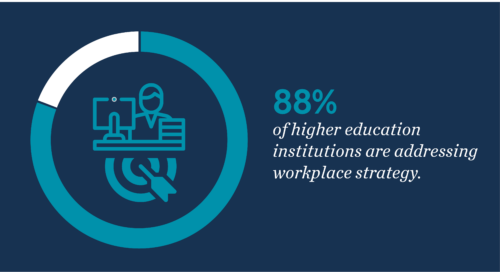
New Awakening for Student-Centered Environments
With the expanding view of what students need beyond the classroom, institutions are redefining and emphasizing the campus as a locus for building community, social and cultural capital, and a sense of belonging, in addition to learning. Colleges are developing new online resources to promote student engagement, good mental health and optimizing many student services through online tools. Six out of the 16 institutions in our roundtable discussed their initiatives to develop one-stop student centers and invest in technology that will expand digital services. Institutions emphasized these services are especially important to support online students.
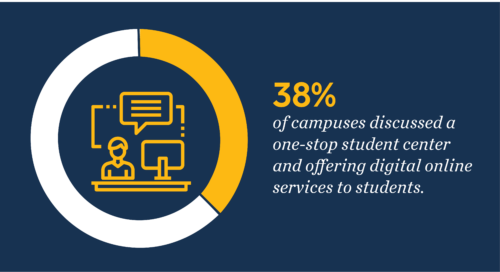
Hybrid Learning is Not Universal. Yet.
A 2020 HGA research study examined the evolving impact of hybrid learning models during the pandemic. While the pandemic accelerated online learning, it also amplified the importance of in-person learning for students moving forward. Although our findings and secondary research suggested hybrid pedagogies could be a new norm, our latest roundtable reveals that higher education institutions define hybrid learning differently. Colleges and universities are continuing to test various hybrid modalities using data tracking and predictive analytics to inform long-term pedagogy shifts.
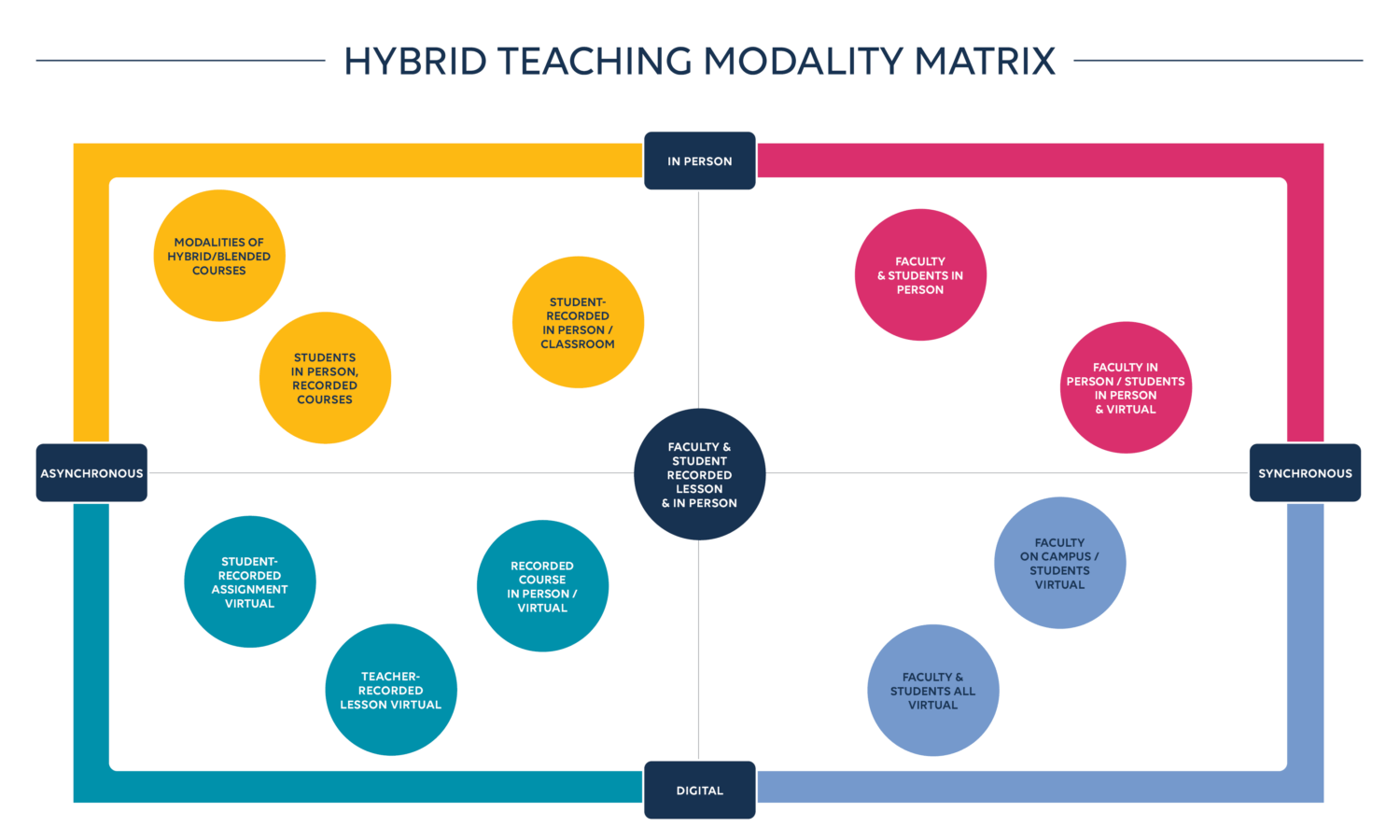
Shifts That Will Impact Facilities Master Plan
Even before Covid-19, higher education institutions were grappling with challenges to the status-quo model of funding and delivering post-secondary learning. Campus planners are now considering how increased hybrid instruction will impact space, including how to approach technology modernization and standardization in new and existing buildings, changes in classroom allocation and office layouts, and assessing real estate inventory for reuse. In our roundtable, 14 of the 16 participants suggested that strategic planning will consider “growing in place” through repurposing existing spaces. This could include assessing if clerical, administration, or non-student facing areas can effectively be performed remotely or using space sharing and if faculty officing might be reimagined.
Looking into the future, institutions have an opportunity to re-assess their strategic facilities master plan as shifts in pedagogy and workplace strategy will have significant impact on the overall campus.
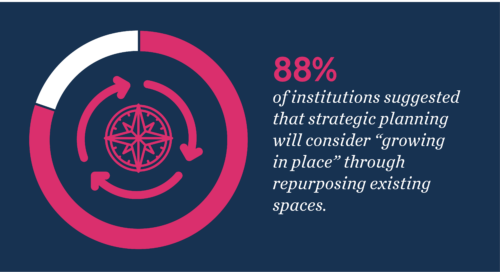
There is no universal solution to navigating these challenges, and no institution is immune from the need to reconsider its evolution, incorporating lessons learned from the pandemic. Each higher education institution will need to weigh the unique needs of their student/faculty population, pandemic recovery, policy changes, debt burden, digital transformation, environmental impact, and social trends to build a path towards a more prosperous future.
More To Learn
The impact of the pandemic is ongoing and institutions are piloting and evaluating new pedagogical strategies, workplace policies, and student-centric services to support equity in learning. They are also reevaluating their space portfolios. There will certainly be more to learn and report as COVID-19 vaccines continue to be deployed, variants emerge, and new behaviors and expectations shift. Given this, we are continuing to conduct research and share findings around the following topics:
- Where students are informally and formally learning on a hybrid-learning campus, including motivations and needs.
- How occupancy evaluations of informal and formal learning environments can measure human impact such as collaboration, sense of belonging, and motivation for learning.
- Outcomes of hybrid-learning strategies at various scales and within various organizational models.
- Longitudinal drivers and trends on master planning campus strategies and technology integration within future of learning environments.

Vanderbilt University – Engineering and Science Building
We look forward to sharing our latest research on Learning Environments of the Future in the upcoming months.
